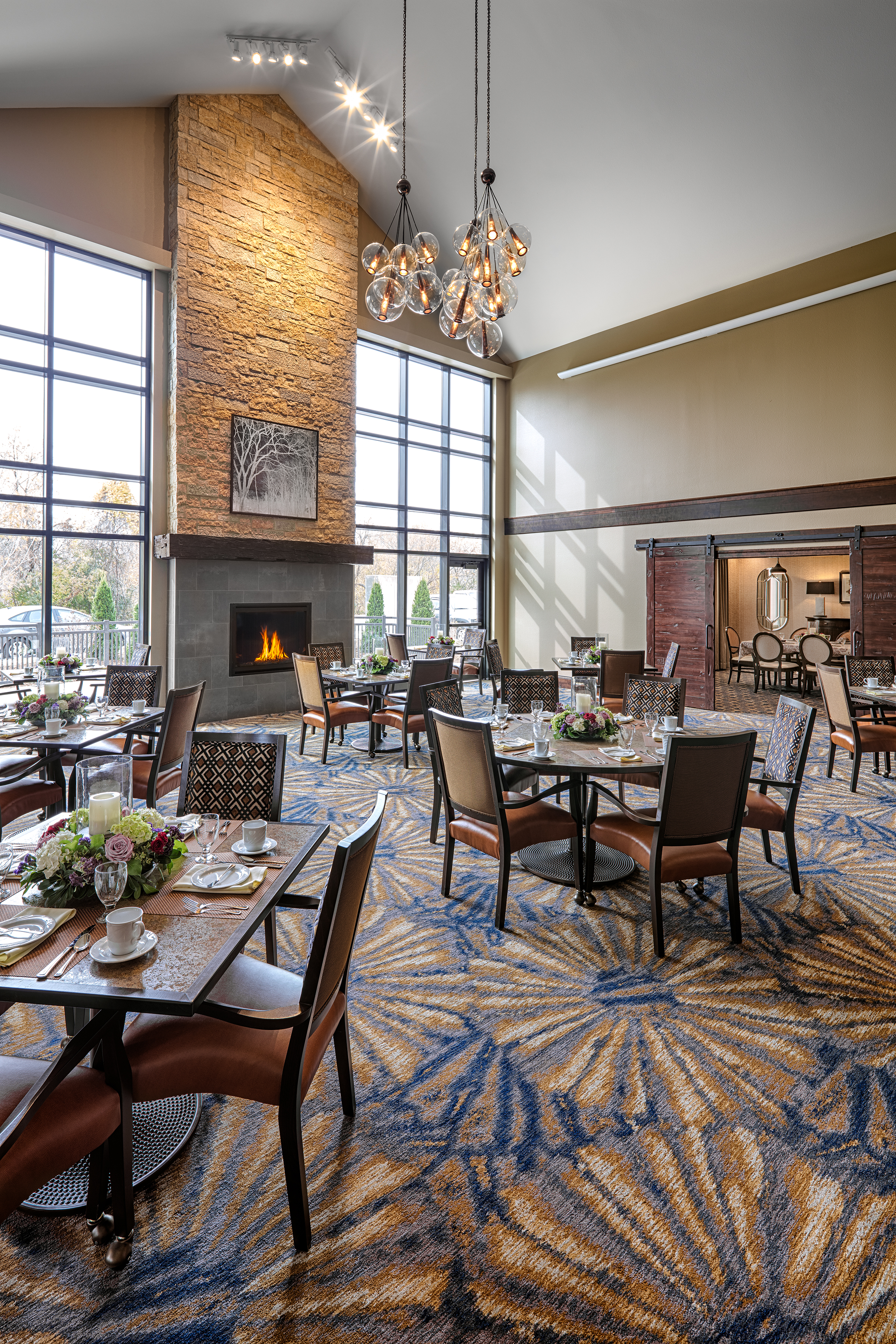Ultimately, senior living communities should feel, to their residents, like home. Achieving that level of comfort benefits current residents, and also—perhaps more importantly—makes the community more attractive to its target demographic of future residents. Luckily, senior living communities can achieve that home-like feel through quality, thoughtful design.
That’s according to Jeanna Korbas, vice president of design at Direct Supply Aptura, whose team designed HarborChase of Shorewood, a senior living community in the Milwaukee suburb of Shorewood, Wisconsin.
In designing the 94-bed assisted living and memory care community, Direct Supply Aptura applied what it has deemed “intelligent design,” an evolution of design that comes from the hospitality industry, Korbas tells Senior Housing News.
In the past, Korbas says, senior living developers simply aimed to make their buildings beautiful, without thought to the types of experiences they wanted to create for their residents. Intelligent design takes a different approach.
“It’s, ‘what does luxury look like to the specific demographic that we’re going to capture?’” she explains.
Specifically, intelligent design involves tailoring a senior living community, and the experience it creates, to whoever the community’s target geographic is, Korbas says. The first step is getting to know a community’s targeted demographic.
“Whatever we put into this community had to tie into the lifestyle its future residents were currently afforded: access to lake front, access to nature, access to cafes and unique boutique dining experiences,” Korbas says. “We’re trying to help keep them immersed in the culture that they’re used to.”
With all of this in mind, a community can truly begin to feel appealing to its future residents.
“Whenever you can understand your neighbors, that sets the path for a great project that’s responsive to the needs of future residents,” Charlie Jennings, chief development officer at Vero Beach, Florida-based Harbor Retirement Associates, tells SHN. Harbor Retirement Associates, which operates HarborChase at Shorewood, operates 22 senior living communities throughout Florida, Alabama, South Carolina, Michigan, Illinois and Wisconsin.
Speaking to a community’s end demographic can also end up being one of the key factors that differentiates a senior living community from its competition, Korbas says.
“If you miss that piece of who you’re actually trying to attract, you can’t compete with that new building that’s going to come down the street in two months,” she says.
That’s exactly where intelligent design comes in.
Intelligent design involves the community’s design unfolding as one moves through the building, Korbas explains. “It’s those little reveals of things you see, sometimes the smallest details—that’s what really makes it a layered and textured experience for someone,” she says.
HarborChase at Shorewood, for example, features a wall with photographs of old, recognizable Shorewood landmarks; plenty of Edison lightbulbs to harken back to the days when Milwaukee was a thriving industrial city; heavy exposed timbers to recall Shorewood’s connection to nature; and carpet that glistens when light hits it, similar to how Lake Michigan gleans in the sunlight.
The community’s dining room also prominently features the logo of the former Pig’n Whistle restaurant that used to sit on the very site of HarborChase at Shorewood.
At the community level, HarborChase of Shorewood is already reaping the benefits of intelligent design. The communitys’s occupancy has been “very solid,” hitting 30% in only three months, Executive Director Michele Carlson tells SHN.
In fact, this is the first time in Carlson’s 16 years in the senior housing industry that she has seen such a positive response to a new senior living community.
“This is the first time where you’re not pulling people into your community,” Carlson tells SHN. “They really want to be a part of us.”
Written by Mary Kate Nelson






